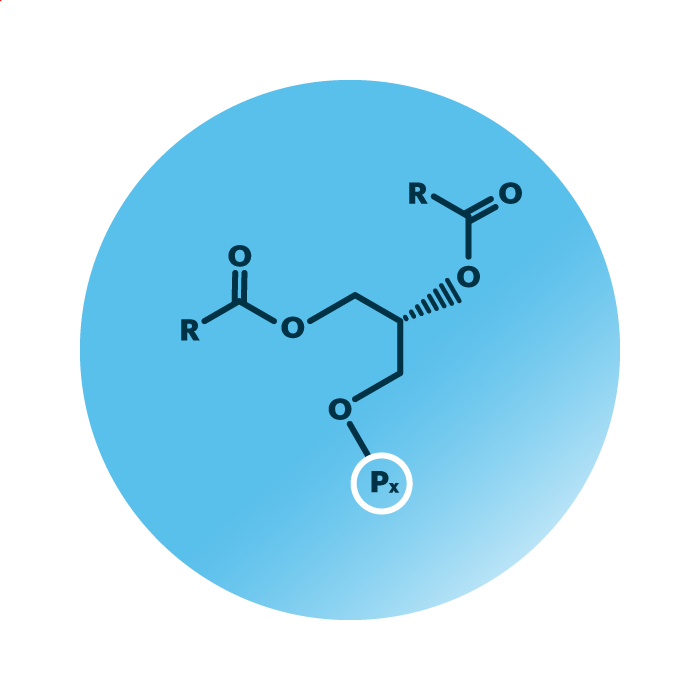Structure. Ester phospholipids belong to the phospholipids. Their structure consists of a glycerol backbone linked to a phosphorylated “head” group: simply phosphate, phosphorylcholine, phosphorylethanolamine, phosphorylinositol, or phosphorylserine. Ester phospholipids further contain up to two ester-linked fatty acids.
Function. Ester phospholipids are present in all living organisms and participate in innumerous cellular events. They are the major structural component of all biological membranes, from plasma membranes to organellar membranes. The ester phospholipid composition influences their biophysical properties. Further, they are essential to regulating cellular functions directly and indirectly.
The head group of ester phospholipids greatly impacts biological function. Phosphatidates (PA) are key intermediates in the synthesis of all phospholipids. Phosphatidylcholines (PC) play an important role in the transport of lipids in blood. Phosphatidylethanolamines (PE) and phosphatidylglycerols (PG) are vital for mitochondria, and phosphatidylserines (PS) and phosphatidylinositols (PI) are crucial to cell signaling.



